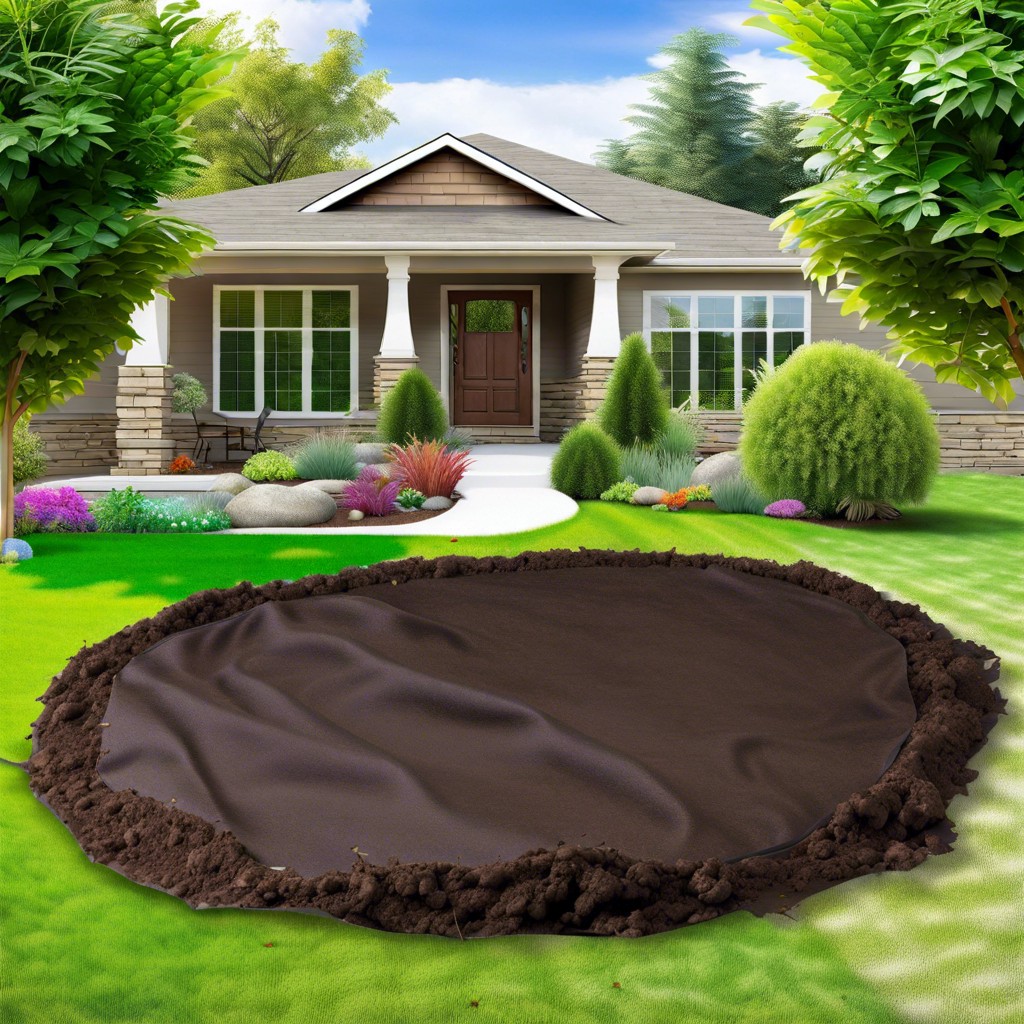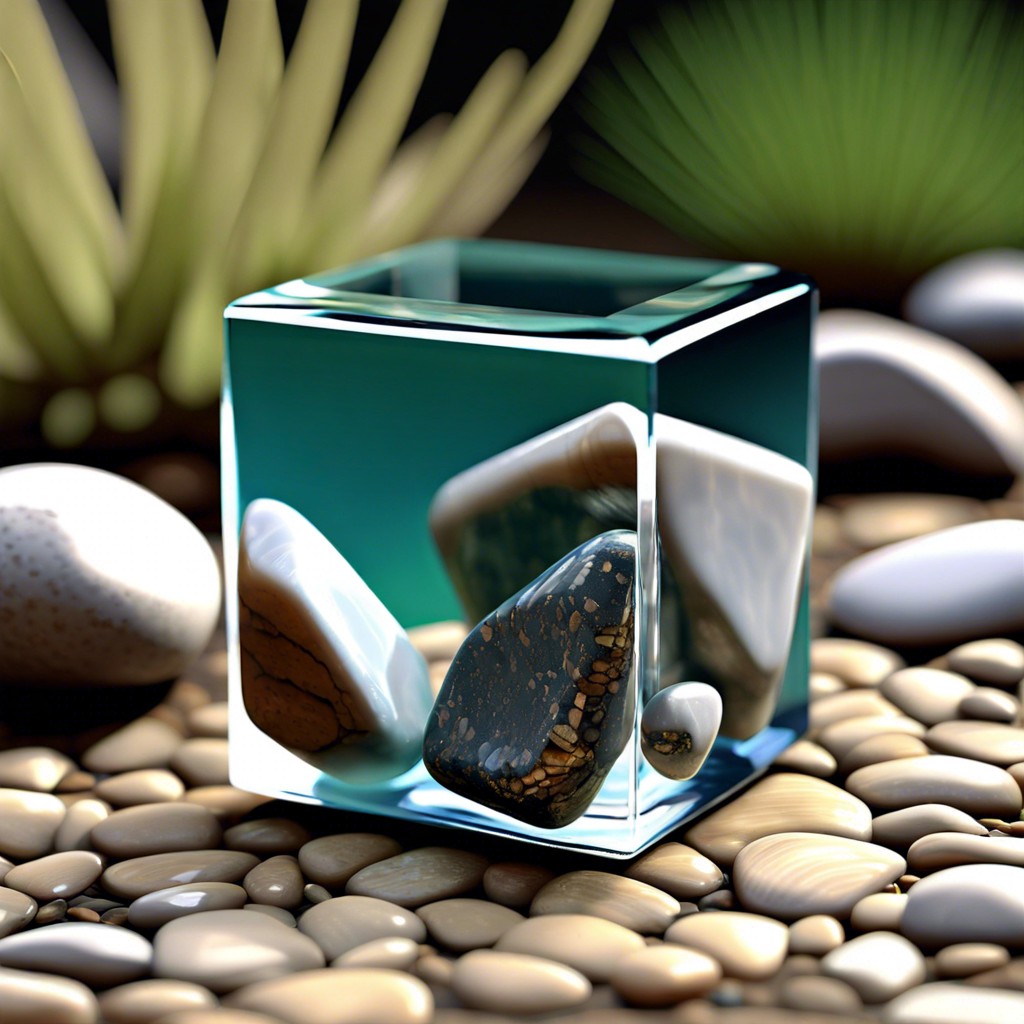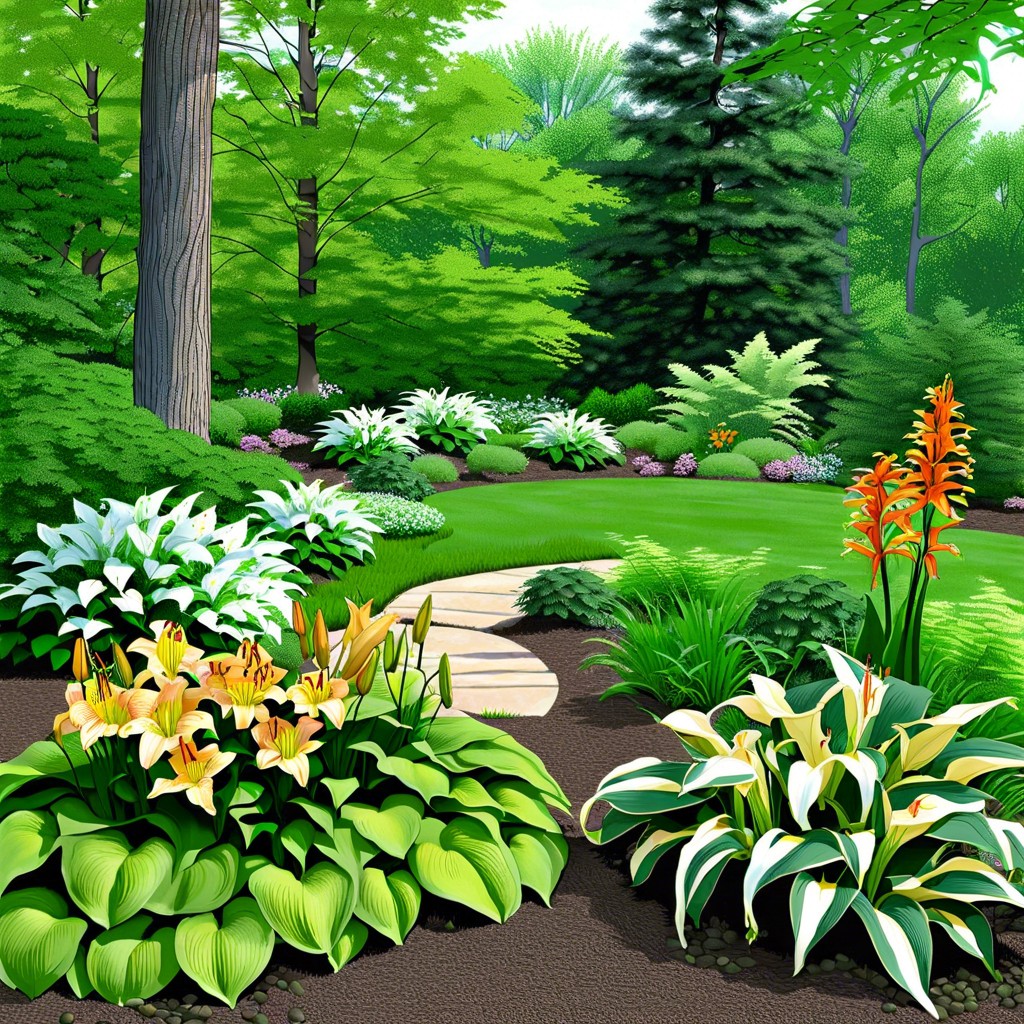Discover the essentials of landscape fabric, including its benefits, types, and proper installation to enhance your gardening and landscaping projects.
Key takeaways:
- Permeability: Allows water and nutrients to pass through.
- Weed control: Prevents weed germination and growth.
- Durability: Withstands outdoor elements for several years.
- Soil fertility: Retains moisture and temperature for plant roots.
- Benefits: Weed suppression, moisture retention, soil erosion prevention, pest deterrence, plant health, longevity, cleanliness, and aesthetics.
What Is Landscape Fabric?

Essentially, this material is a geotextile made from woven or non-woven synthetic fibers or natural substances like burlap or linen. It’s designed to provide a barrier between the soil and mulch or gravel, aiding in landscape management.
Here are some key points about its functionality and structure:
- Permeability: Allows water and nutrients to pass through, promoting healthy soil while minimizing soil erosion.
- Weed Control: Acts as a physical block that prevents weed germination and growth, reducing the need for chemical herbicides or frequent weeding.
- Durability: Constructed to withstand outdoor elements, it remains effective for several years, depending on material thickness and quality.
- Soil Fertility: Though a barrier, it helps to retain soil moisture and temperature, fostering a stable environment for plant roots.
Understanding these fundamentals ensures that your landscaping efforts are not only aesthetically pleasing but also environmentally friendly and sustainable.
Benefits of Using Landscape Fabric
Landscape fabric, often referred to as weed barrier, offers a multitude of advantages that can greatly enhance your gardening efforts:
- Weed Suppression: By creating a physical barrier between the soil and sunlight, this fabric effectively inhibits weed growth, reducing the need for frequent and laborious weeding.
- Moisture Retention: The material allows for water permeation, helping to conserve soil moisture, which is beneficial for your plants and reduces the need for constant watering.
- Soil Erosion Prevention: It helps in keeping the soil in place, especially on slopes, minimizing erosion caused by wind and water runoff.
- Pest Deterrence: By providing an extra layer of defense, the fabric can deter certain pests, such as gophers and moles, from digging through and disrupting your garden beds.
- Plant Health: As it keeps the soil structure intact and reduces the competition from weeds, landscape fabric can contribute to better overall plant health and growth.
- Longevity and Maintenance: Designed to last for several years, the fabric minimizes the need for regular garden maintenance, saving time and effort in the long run.
- Cleanliness and Aesthetics: It helps to create a clean, uniform look, and when covered with mulch or gravel, it can significantly enhance the visual appeal of your landscape.
With these benefits, integrating landscape fabric into your garden management can lead to a more organized, low-maintenance, and thriving outdoor space.
How to Install Landscape Fabric
Start by clearing the area where you plan to lay the fabric, removing all weeds, debris, and existing vegetation to create a smooth, flat surface. Once the site is prepped, proceed with these steps:
1. Measure the space to determine the amount of fabric needed. Always add a bit extra to your measurements to ensure full coverage, considering that you’ll overlap the edges of the fabric.
2. Roll out the landscape fabric over the prepared soil, keeping it as flat as possible. For optimal weed prevention, ensure the shiny side is facing down, as this helps to reflect sunlight away from the soil.
3. Overlap the edges of adjacent fabric strips by at least 3 to 6 inches to prevent weeds from finding their way through gaps.
4. Secure the fabric with landscape staples, placing them at the edges and along the overlaps about every 10 to 12 inches. For sloped areas, use additional staples to keep the fabric in place.
5. Cut X-shaped slits into the fabric where you want to place plants, folding back the flaps to dig planting holes. After installing your plants, fold the flaps back around the base, minimizing exposed soil.
6. Cover the fabric with mulch or stones for a finished look, which also protects the fabric from sunlight and further reduces weed growth.
Remember, while the fabric reduces maintenance, it’s not a set-it-and-forget-it solution. Regularly check for and remove any weeds that sprout on top of the fabric, and add more mulch as needed to maintain its efficacy.
Choosing the Right Landscape Fabric for Your Project
Selecting the appropriate landscape fabric hinges on the specifics of your outdoor project. For instance, a heavy-duty woven fabric might be best suited for areas under walkways or pavers, providing a stable base that can endure high traffic. On the other hand, for flower beds or vegetable gardens, a lighter, non-woven fabric is preferable as it allows for better air and water flow to your plants.
It’s also essential to consider the longevity you expect from the fabric; certain materials come with UV protection to prolong their life, especially in sunny areas. Additionally, the fabric’s permeability is a critical factor – you want a balance that blocks weeds effectively but still permits moisture to reach the soil, fostering healthy plant growth.
Always check the manufacturer’s recommendations to ensure it’s designed for usage in your intended application.
Common Questions About Landscape Fabric
Many gardeners and landscapers, from professionals to novices, often have questions about the use of landscape fabric. Here are answers to some of the most frequently asked questions:
Does landscape fabric really prevent weeds?
Yes, it effectively blocks sunlight from reaching the soil, which helps to prevent weed growth. However, it’s important to note that some weeds can still grow on top of the fabric if organic material like leaves or mulch accumulates over time.
Can I use landscape fabric in vegetable gardens?
While it’s not typical, you can use it in vegetable gardens. It’s best suited for areas with perennial plants. Ensure the fabric has perforations to allow water and air circulation for healthy plant growth.
How long does landscape fabric last?
The durability depends on the type of fabric and environmental conditions. Generally, it can last anywhere from 5 to 20 years. UV-resistant options and those covered with mulch tend to have a longer lifespan.
Is it breathable and will it allow rain to pass through?
Quality landscape fabrics are designed to be permeable to allow air and water through, which is vital for plant health and soil moisture. Before purchasing, check the product specifications to ensure these features.
Do I need to replace landscape fabric regularly?
Not necessarily. If installed properly and chosen for the correct application, landscape fabric can last many years without needing replacement. However, inspect it regularly and repair or replace sections as needed.
Can landscape fabric harm the soil?
There is some debate about this, but most experts agree that when used correctly, it does not harm the soil. To protect soil health, it’s important to choose a fabric that allows for adequate air and water flow.




